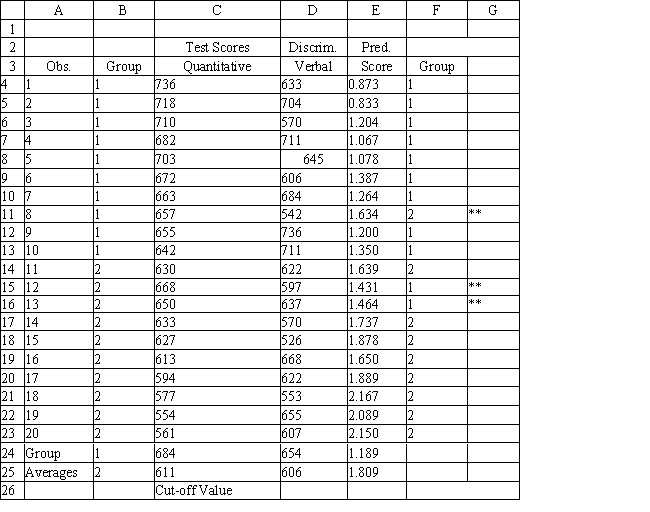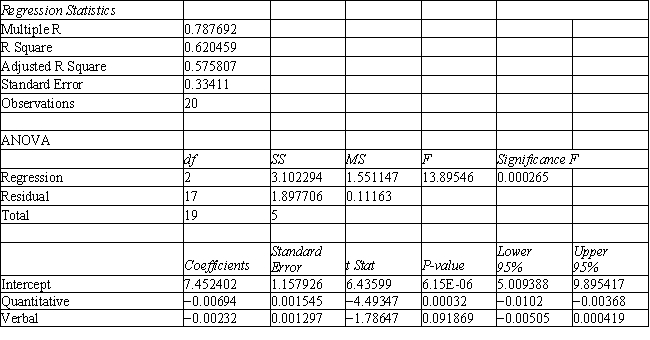Exhibit 10.1
The following questions are based on the problem description and the output below.
A college admissions officer wants to evaluate graduate school applicants based on their GMAT scores, verbal and quantitative. Students are classified as either successful or not-successful in their graduate studies. The officer has data on 20 current students, ten of whom are doing very well (Group 1) and ten who are not (Group 2) . 




-Refer to Exhibit 10.1. Suppose that for a given observation, the difference between Mahalanobis distances between group 1 and 2 (G1-G2) is big and negative. This means that
Definitions:
Cost Estimation
The process of predicting the costs associated with a particular action or project, crucial for budgeting and project planning.
Operating Leverage
A measure of how sensitive net operating income is to a given percentage change in unit sales.
Operating Leverage
A measure of how revenue growth translates into growth in operating income, indicating the proportion of fixed costs in a company's cost structure.
Break-Even Point
The level of production or sales at which total revenues equal total costs, resulting in no profit or loss.
Q15: The regression function indicates the<br>A) average value
Q20: The RHS value of a goal constraint
Q24: When might a network flow model for
Q65: What is the expected number of phone
Q66: Seasonality in a time series is indicated
Q76: This selection of the initial feasible solution,
Q90: Refer to Exhibit 10.1. Suppose that for
Q96: A company will be able to obtain
Q107: The Mahalanobis distance measure accounts for differences
Q111: If using the regression tool for two-group